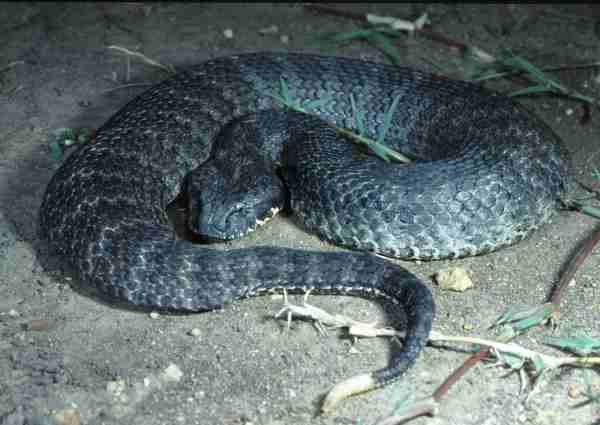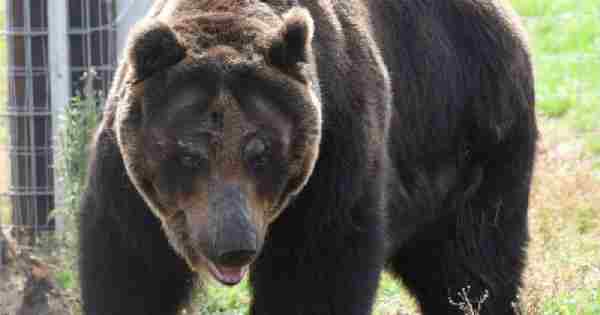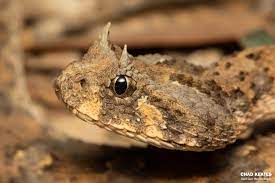France’s rich and captivating landscapes have long been synonymous with art, culture, and culinary excellence. However, beyond the idyllic countryside and historic cities lies a hidden truth – the presence of hazardous creatures that inhabit its diverse terrains. From the rugged expanses of the Pyrenees to the dense woodlands of the Ardennes, an array of formidable animals call this country home.
Table of Contents
In this in-depth investigation, we shed light on the often-overlooked topic of dangerous animals in France, unveiling the wilder facets of this charming nation. Amidst the elegance of its vineyards and châteaux, a host of creatures wield the power to inflict harm, reminding us of nature’s unpredictability.
Join us as we journey through rocky mountains, verdant valleys, and coastal enclaves to gain insights into the mesmerizing yet perilous realm of France’s untamed inhabitants.
The Presence of Potentially Harmful Wildlife in a European Country
In the tranquil landscapes of Europe, the notion of potentially dangerous wildlife may seem out of place. Yet, France, with its diverse ecosystems and varying terrains, harbors a surprising array of creatures that can pose risks to both humans and livestock.
From elusive predators like wolves reclaiming their ancient territories in the Alps and Pyrenees to venomous snakes hidden in the sun-soaked meadows, the presence of such wildlife is a reminder of the delicate balance between nature and civilization.
The rewilding initiatives that have been successful in bringing back certain species have also reintroduced potential threats into the environment. While the chances of encountering these animals remain relatively low, understanding their existence is vital for both locals and tourists who venture into the country’s wilder regions.
1. Venomous Snakes
A. The European Adder (Vipera berus)

The European Adder, also known as the Common Adder, is one of the few venomous snake species found in France. Preferring woodland, heathland, and moorland habitats, these snakes are known for their distinctive zigzag patterns along their backs. Despite their venomous nature, European Adders are generally shy and elusive, preferring to avoid encounters with humans.
Their venom, while not usually lethal, can cause pain, swelling, and discomfort if bitten. Awareness campaigns educate hikers and outdoor enthusiasts about recognizing and respecting the habitat of these snakes, helping to reduce potential encounters.
B. Montpellier Snake (Malpolon monspessulanus)

The Montpellier Snake is another venomous snake species found in France. Unlike the European Adder, Montpellier Snakes are rear-fanged and possess mild venom primarily used to subdue their prey, which mainly consists of small vertebrates. These snakes are well-camouflaged and often found in Mediterranean habitats.
While their venom is not considered a significant threat to humans, any snakebite should be treated seriously. Encountering Montpellier Snakes is relatively rare due to their reclusive nature and preference for avoiding human interaction.
2. Wild Boars

A. Increasing Population and Urban Encounters
Wild boar populations in France have been on the rise, and their expansion into urban and suburban areas has led to increased encounters with humans. The destruction of natural habitats and the availability of human-generated food waste contribute to this phenomenon. These encounters can be particularly dangerous, as wild boars are large, powerful animals that can become aggressive when threatened or cornered.
B. Potential Dangers and Safety Measures
While wild boar attacks on humans are rare, they can occur, especially when humans approach piglets or inadvertently provoke the animals. In response, local authorities and conservation organizations have been working to educate the public about the risks associated with wild boar encounters.
This includes promoting responsible waste disposal, avoiding feeding wild animals, and maintaining a safe distance if encountered. Additionally, measures such as erecting barriers and signs in areas prone to wild boar activity help mitigate the potential dangers posed by these animals.
3. European Wasps and Hornets

A. Species Varieties and Nesting Habits
France is home to various species of wasps and hornets, including the European hornet and the common wasp. These insects play important roles in ecosystem balance, but they can become a nuisance and even a danger to humans when their nests are built in close proximity to human activity.
Hornets, known for their large size, and wasps, recognized by their distinct black and yellow markings, can establish nests in trees, bushes, and buildings.
B. Sting Reactions and First Aid
Stings from European wasps and hornets can cause painful reactions, varying from mild discomfort to severe allergic responses in some individuals. Proper first aid involves cleaning the affected area, using cold packs to reduce swelling, and taking pain relievers if needed.
Severe allergic reactions require immediate medical attention. To mitigate the risk of stings, individuals can take preventative measures such as avoiding sudden movements around these insects, refraining from swatting at them, and wearing appropriate clothing when in areas where they are active.
4. Eurasian Lynx

A. Reintroduction Efforts and Conservation
The Eurasian Lynx, once extinct in France, has seen reintroduction efforts to restore its presence in certain regions. These elusive and solitary predators play a crucial role in maintaining balanced ecosystems.
Reintroduction programs, supported by conservation organizations, focus on areas with suitable habitats and low human impact. These efforts aim to reconnect fragmented populations and ensure the long-term survival of this magnificent species.
B. Potential Risks and Behavior
While Eurasian Lynx typically avoid human interaction, the expansion of their territories can bring them into proximity with rural communities. Concerns arise about potential livestock predation, especially in areas where traditional husbandry practices are prevalent.
However, studies show that such predation is often limited and manageable. Understanding the behavior of these predators and implementing preventive measures, such as secure enclosures for livestock, can help minimize conflicts and ensure the coexistence of humans and lynx.
5. Wild Cats (Feral Domestic Cats)

A. Feral Cat Population and Impact
Feral domestic cats are a concern in France, as in many parts of the world. These cats, descendants of domesticated animals that have reverted to a wild state, can negatively impact native wildlife through predation and competition. Their presence poses a threat to small mammals, birds, and other local fauna. The prolific breeding of feral cats contributes to their population growth, making them a significant concern for local ecosystems.
B. Preventive Measures and Responsible Pet Ownership
Efforts to address the feral cat population emphasize responsible pet ownership, including spaying and neutering domestic cats to prevent uncontrolled breeding. Organizations also promote the adoption of trap-neuter-return (TNR) programs to manage feral cat colonies in humane ways.
By reducing the feral cat population, these measures aim to mitigate their impact on local wildlife and preserve the delicate balance of France’s ecosystems.
6. Brown Bears

A. Recent Reintroduction and Range
Brown bears have made a comeback in France, particularly in the Pyrenees region. Reintroduction efforts, spanning several decades, have aimed to restore this apex predator to its native range. These efforts involve careful monitoring of the bear population and public engagement to ensure the coexistence of bears and humans.
B. Human-Bear Conflicts and Safety
The presence of brown bears has led to human-bear conflicts, often centered around livestock predation. Local herders and communities have raised concerns about these conflicts, which can lead to economic losses. Authorities work to address these issues by providing compensation for livestock losses, implementing bear-resistant infrastructure, and educating the public about safety measures when encountering bears.
Responsible outdoor practices, such as proper food storage, help reduce the chances of negative encounters. Balancing the conservation of these iconic animals with the needs of local communities remains an ongoing challenge.
In navigating the complex relationship between potentially hazardous wildlife and human activities, France exemplifies the need for a harmonious coexistence that prioritizes safety, conservation, and the preservation of its diverse ecosystems.
Factors Contributing to Dangerous Animal Encounters
Dangerous animal encounters don’t arise solely from the animals themselves; a confluence of factors often leads to these situations. Human encroachment into natural habitats disrupts the territories of these creatures, increasing the likelihood of interactions. The expansion of urban areas and agricultural activities into wilderness regions can lead to more frequent sightings of wildlife in proximity to human settlements.
Additionally, factors like reduced prey availability due to environmental changes might prompt certain animals to seek alternative food sources, potentially bringing them into conflict with humans. Inadequate waste management practices can also attract wildlife to human areas. A comprehensive understanding of these factors is crucial for mitigating conflicts and ensuring the safety of both humans and animals.
Conservation and Coexistence Efforts
Amidst the challenges of dangerous wildlife encounters, conservationists and local authorities are working to strike a balance between protecting these creatures and ensuring human safety. Conservation efforts involve raising awareness about the presence of potentially dangerous animals, implementing strategies to minimize conflict, and studying the behavior and habitats of these creatures to make informed decisions.
Coexistence initiatives include the establishment of protected areas, the development of guidelines for responsible outdoor activities, and educational programs to promote understanding and appreciation of wildlife. By fostering coexistence and preserving biodiversity, these efforts contribute to the intricate tapestry of France’s natural heritage.
Final Words
The intertwining of potentially dangerous wildlife and human habitation in France highlights the intricate relationship between nature and society. While the presence of these creatures might evoke fear, it’s crucial to approach the topic with a balanced perspective.
By understanding the contributing factors, implementing thoughtful conservation strategies, and embracing coexistence, France can continue to celebrate its rich biodiversity while minimizing risks for both its residents and visitors. As the country evolves and adapts, finding harmony between its wild inhabitants and human activities remains an ongoing and essential endeavor.
Reference:
- https://campingseeker.com/dangerous-animals-in-france
- https://www.euronews.com/green/2023/02/03/watch-the-hunt-for-an-elusive-grey-wolf-once-thought-to-be-extinct-in-france#
- https://www.diplomatie.gouv.fr/en/coming-to-france/france-facts/symbols-of-the-republic/article/the-gallic-rooster
A motivated philosophy graduate and student of wildlife conservation with a deep interest in human-wildlife relationships, including wildlife communication, environmental education, and conservation anthropology. Offers strong interpersonal, research, writing, and creativity skills.










